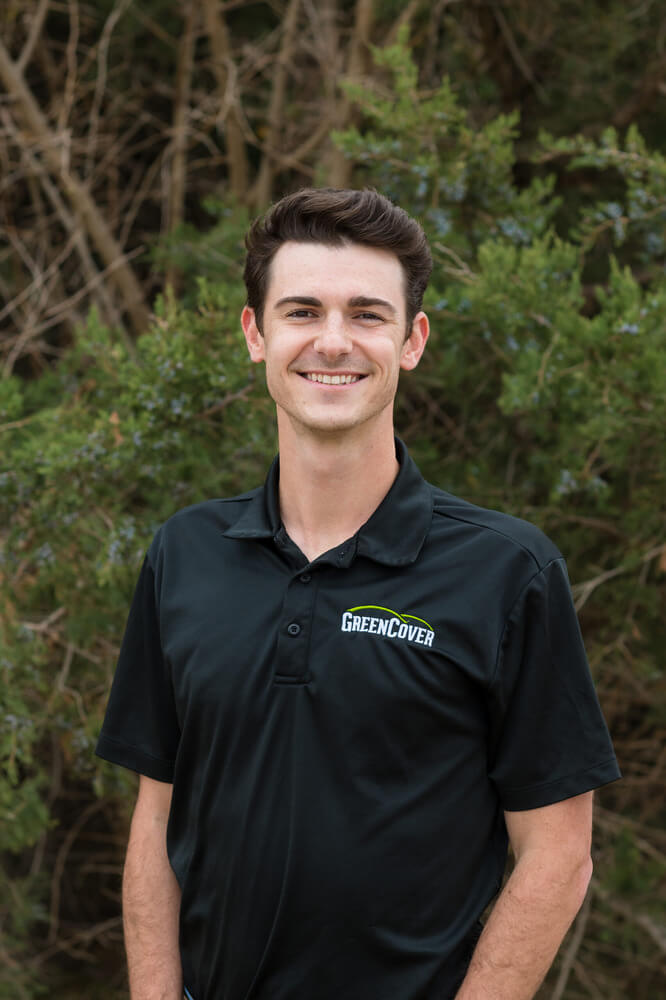Some people might ask, “What does a regenerative farm look like?” In Merced, California, Zack and Montica O’Crowley have a beautiful example.
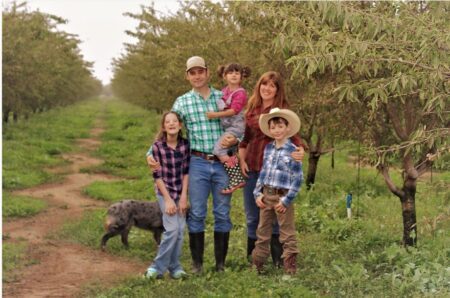 Both Zack and Montica grew up ranching and share a passion for agriculture. Montica recalls, “Zack and I both grew up on cattle ranches, riding horses and taking care of animals and the land. When we met in college we discovered that we had a lot in common, including the desire to work our own land. We got married and realized that, unlike a lot of our friends who had family land to return to, if we were going to work our own land we’d have to do it on our own.” Zack’s first job out of college was working in California’s booming nut processing business and this experience would prove to be invaluable down the road. When the opportunity arose, the O’Crowley’s purchased their almond orchard in 2020. “When we bought the farm, it had been farmed conventionally for 50 years, and with almonds you keep the ground completely bare because during harvest, the almonds get shaken onto the ground and then swept into windrows and picked up. Any vegetation hinders the sweeping and collecting process.” These bare dirt practices require frequent mowing, chemicals or tillage to keep things short and the summer heat and drought bakes the barren dirt. “Our orchard had absolutely no ground cover, it was completely bare, and extremely, extremely hard.”
Both Zack and Montica grew up ranching and share a passion for agriculture. Montica recalls, “Zack and I both grew up on cattle ranches, riding horses and taking care of animals and the land. When we met in college we discovered that we had a lot in common, including the desire to work our own land. We got married and realized that, unlike a lot of our friends who had family land to return to, if we were going to work our own land we’d have to do it on our own.” Zack’s first job out of college was working in California’s booming nut processing business and this experience would prove to be invaluable down the road. When the opportunity arose, the O’Crowley’s purchased their almond orchard in 2020. “When we bought the farm, it had been farmed conventionally for 50 years, and with almonds you keep the ground completely bare because during harvest, the almonds get shaken onto the ground and then swept into windrows and picked up. Any vegetation hinders the sweeping and collecting process.” These bare dirt practices require frequent mowing, chemicals or tillage to keep things short and the summer heat and drought bakes the barren dirt. “Our orchard had absolutely no ground cover, it was completely bare, and extremely, extremely hard.”
A New Way
As they began their first year with the orchard, regenerative agriculture was still an unknown concept for the O’Crowley’s, but they quickly realized they were not comfortable with the large amount of chemicals traditionally used in almond production. “The first pallet that showed up of chemicals at our house, my wife was like, wow, this is not what we want. We’re not doing this.” But Zack and Montica weren’t impressed with organic production models either. Montica explains, “It felt like they were basically doing the same thing, just switching which chemicals and inputs they used and there was still so much bare ground. We are watering the ground, why don’t we let it grow? But everybody told us… don’t let anything grow up if you’re going to go organic or you’ll never get on top of it again.” Research for a better way to farm led to a video of Gabe Brown talking about the principles of soil health. Zack quickly understood that while farming practices can differ, the principles for healthy ecosystems remain the same. “I walked out of that room and I said, “Montica, I figured out what we are! We’re regenerative. That’s what we want to do.”
Where to Begin
Eager to embark on their new regenerative journey, the couple identified their biggest problem. “Water infiltration was our number one problem. The trees were stunted and the water wouldn’t infiltrate and it threatened to drown the trees and we knew we couldn’t afford to tear the trees out.”
The O’Crowley’s asked the local experts how to solve the infiltration issue. Some suggested deep ripping, others suggested drilling holes throughout the orchard, and one suggested pumping acid in the ground to force the soil to open up. Recognizing the disturbance each one of these would cause, the O’Crowley’s continued their search for a better way.
Their search eventually brought them across the scripture in Leviticus chapter 25 where God told the people to let the earth put forth whatever it wanted to during the seventh year. Nervous for the potential disaster the weeds could create, Zack and Montica took the advice and let go of the reins. The formerly scorched earth, barren floors quickly became a jungle and some weeds were taller than the trees! It was uncomfortable for them to look at and neighbors and coworkers shared their concern. But after that initial crazy growth of weeds it began to change. The biology stimulated by the extremely diverse weed growth woke up and started to change the soil!
Adding Livestock
Katahdin hair sheep took well to the massive weeds that had overtaken the almond trees. Using adaptive management grazing, the sheep quickly started to make a positive impact. “The interesting thing is the weeds didn’t come back. Despite a plethora of weed seeds that we added to the seed bank, the soil was beginning to change. The weeds had performed their function, and soon more favorable plants were doing better each year.”
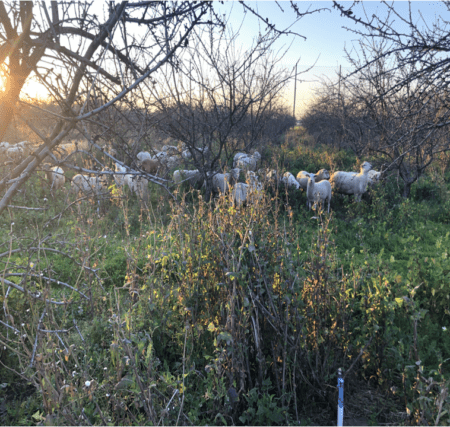
Another way to harvest almonds
One major roadblock in their regenerative journey still remained — traditional almond harvesting requires bare ground. “We just kept coming back to the same thing over and over and over again. And that was we really can’t make good progress on this unless we figure out how to harvest without shaking the almonds onto the ground. Because it ruins our sheep program. It ruins our cover crop program. It ruins the movement forward of the carbon, the soil, the whole nine yards.” So why not redesign that?
Pistachios, which are also common to the Central Valley use an above ground harvesting system. Instead of shaking the nuts to the ground, then sweeping them to the middle and picking them off the bare orchard floor, pistachios are shaken into an inverted umbrella like catchment on the shaker. Zack, using his engineering background, figured out how to retrofit this machine to work on almonds and it completely opened the playbook for their orchard management.
Now that the nuts never touched the ground, it didn’t matter if there was vegetation throughout the orchard. Matter of fact, it didn’t matter if that vegetation was tall, still growing at harvest time, and even had sheep and other livestock grazing all season long.
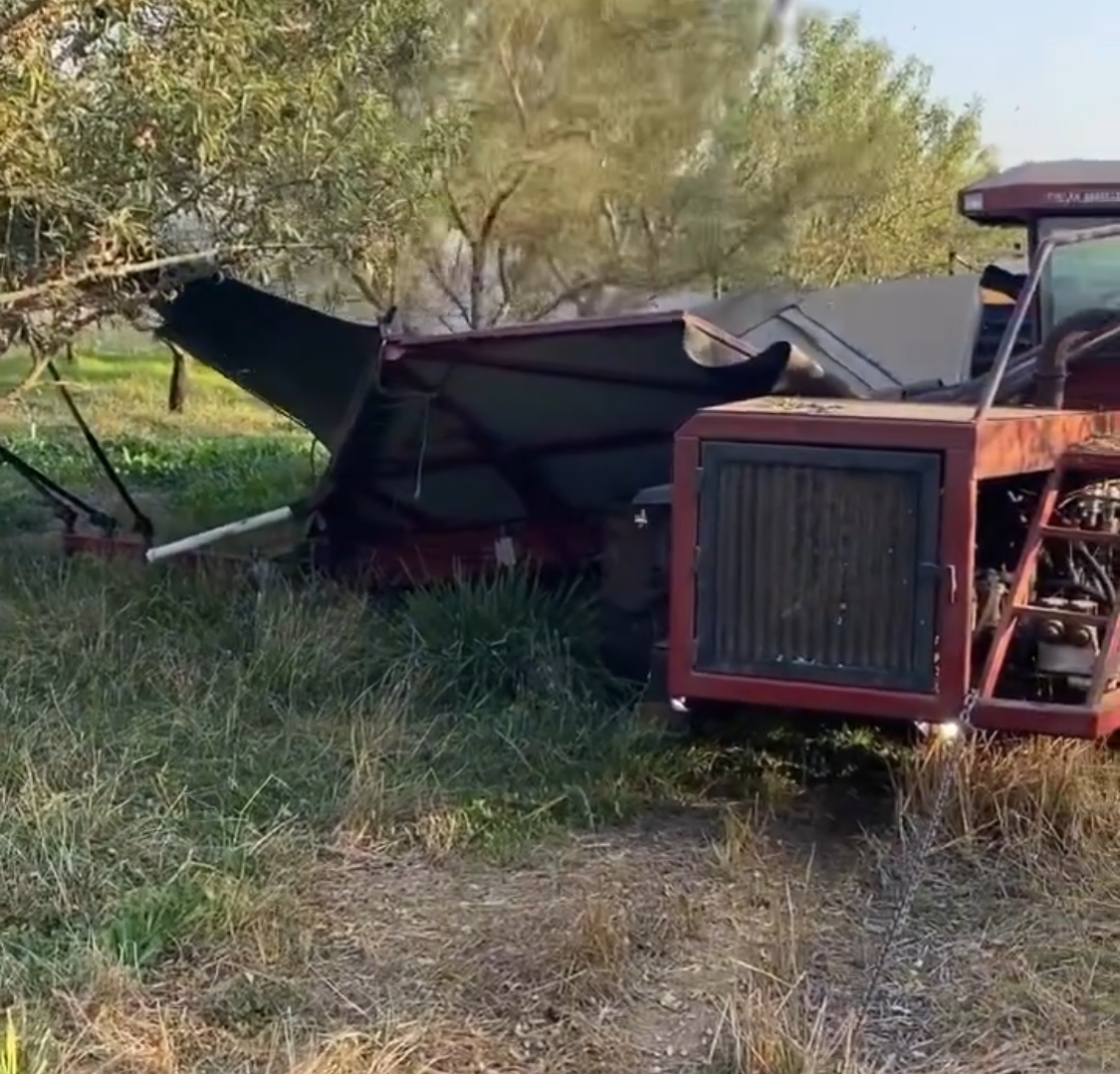
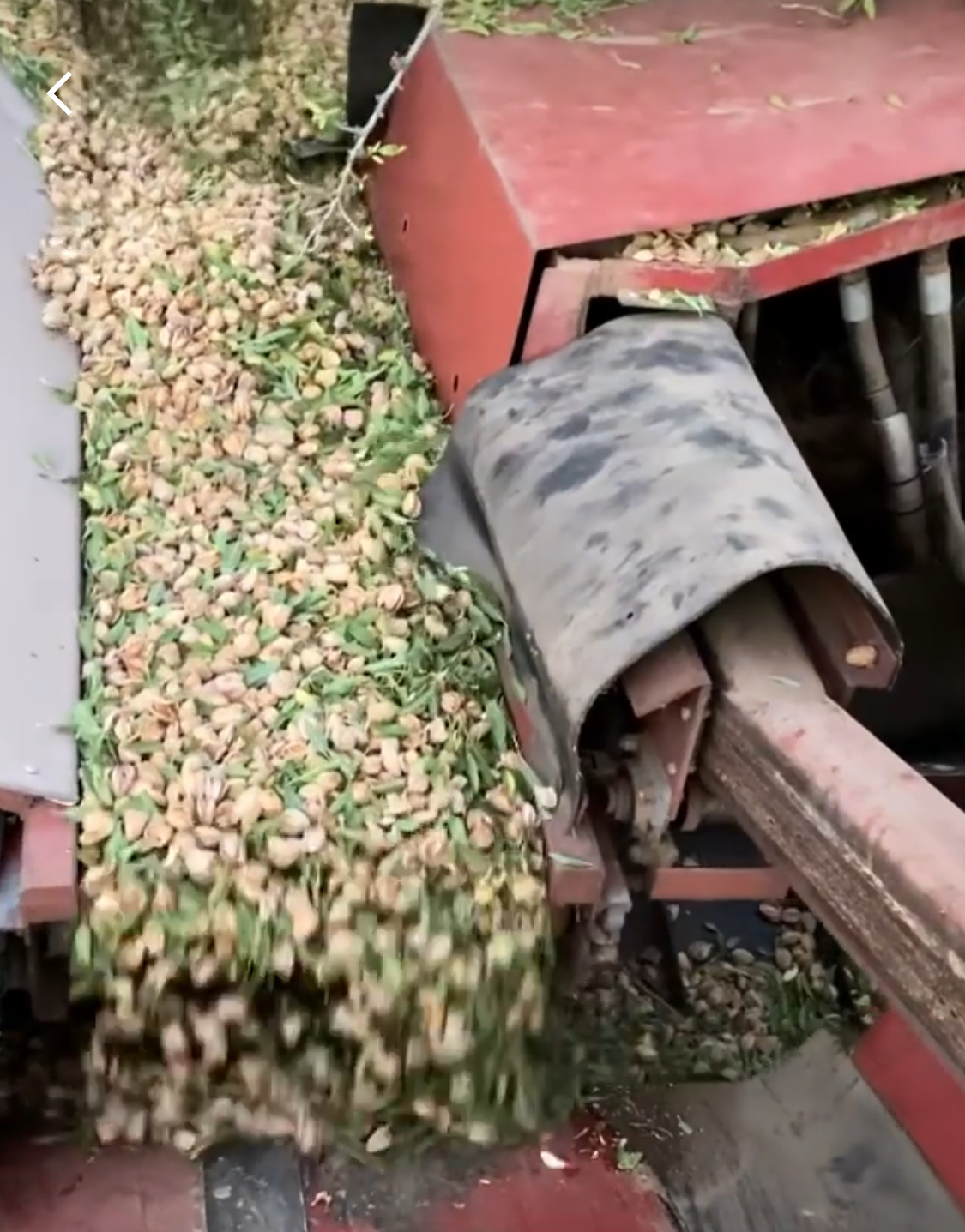
Now that the nuts never touched the ground, it didn’t matter if there was vegetation throughout the orchard. Matter of fact, it didn’t matter if that vegetation was tall, still growing at harvest time, and even had sheep and other livestock grazing all season long.
Signs of success
With such a unique approach to growing almonds, the O’Crowley’s captured the attention of Dr. Jonathan Lundgen and the Ecdysis Foundation who had an ongoing study of regenerative almond production. The study took annual samples from about 30-40 almond orchards, evaluating metrics such as organic matter levels, percent of living ground cover, water infiltration rate, beneficial insect count, and more. This gave a prime opportunity to collect third party data of the changes that were happening.
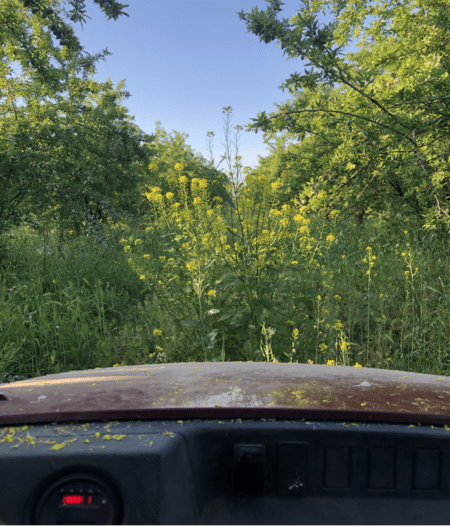
“We were at 0.72% organic matter in 2020. That’s why our ground was hard as concrete, but over the last three years we’ve actually gained about 0.6%, up to 1. 3% OM.”
The increase in organic matter quickly started to boost water infiltration as well. “In 2020, almost nothing would go in at all…We went from about 0.001 ml/s to 2.2 ml/s as of last year.”
“We have living ground cover, almost 100 percent living ground cover. The regenerative orchards on average have about just a little under 50%,” since the row middles are planted but usually not in the tree row. “And so not only do we have a greater percentage, but we have a greater percentage for the entire year.”
The vegetation boosts other ecosystem processes as well. “The Ecdysis study found that in a conventional orchard, there’s 40,000 bugs per acre. When they did ours, they calculated 5 million bugs per acre.” These insects are helping with pollination and with keeping pest issues to a minimum, leading to healthier trees. “Without a doubt the health of our orchards has increased. Our trees are healthy, happy and thriving.” Montica sums it up perfectly, “Our goal is better nutrition through producing the most nutritionally-dense healthy almonds that we can. We believe that our food should be full of the goodness of the earth and that it should contain the building blocks for healing and energy for our bodies and minds. Increasing the nutrition of an almond is what we are after and that all starts with the soil.”
Also check out the 11th edition, our latest Soil Health Resource Guide, over 90 pages packed with scientific articles and fascinating stories from soil health experts, researchers, farmers, innovators, and more! All as our complimentary gift to you, a fellow soil health enthusiast!This article first appeared in the 10th Edition of Green Cover's Soil Health Resource Guide.
